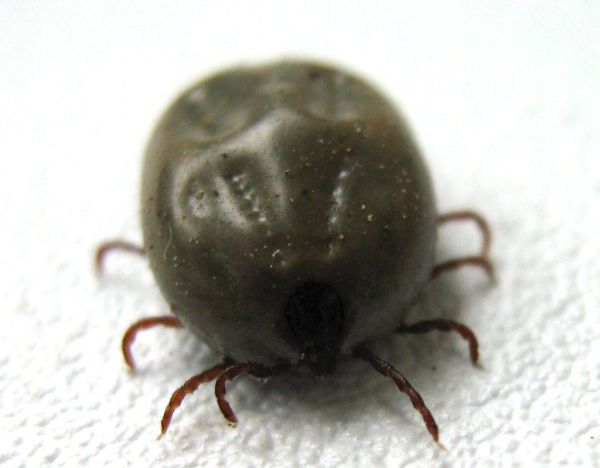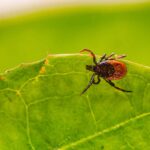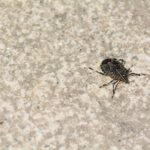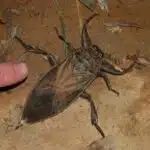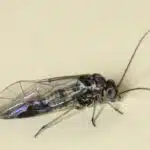Ticks are a common household pest that can cause a range of health problems. These tiny arachnids are known for their ability to transmit diseases such as Lyme disease, Rocky Mountain spotted fever, and babesiosis. It is essential to take preventative measures to avoid tick infestations in your house, but if you already have a problem, it’s vital to act quickly. In this article, we will discuss how ticks get into your house and provide practical tips on how to get rid of them.
As a pest control expert, I understand the importance of identifying the root cause of an infestation to effectively eliminate it. Ticks can enter your home in many ways, including hitching rides on pets or humans from outside areas such as woodlands and gardens. Once inside your home, they can hide in hard-to-reach places like carpets, furniture, and curtains. If left unchecked, ticks can multiply quickly and become a significant issue for you and your family’s health. However, with the right knowledge and techniques, you can prevent and eradicate tick infestations in your house.
Understanding The Dangers Of Tick Infestations
Tick infestations in your house can pose significant health risks to you and your family. Ticks carry various diseases, such as Lyme disease, Rocky Mountain spotted fever, and tick-borne encephalitis. These diseases can cause severe symptoms like fever, headache, muscle pain, and even paralysis. Therefore, it is crucial to take necessary measures to prevent ticks from entering your home.
Prevention methods are the first line of defense against tick infestations. Keep your yard tidy by trimming bushes and trees regularly and removing any debris or leaf litter that may attract ticks. Additionally, use insect repellent when working or playing outdoors and avoid walking through high grass or wooded areas where ticks may be present. Check your pet’s fur for ticks after outdoor activities and keep them on a regular flea/tick prevention regimen.
If you suspect that you have a tick infestation in your home, it is essential to act quickly to prevent further spread. Tick bites are tiny and often go unnoticed; therefore, it is vital to inspect yourself for bites after spending time outdoors. If you find a tick attached to your skin, remove it promptly using fine-tipped tweezers or seek medical attention if necessary. In the next section, we will discuss identifying the signs of a tick infestation in your house so that you can take appropriate tick control strategies to get rid of them effectively.
Identifying The Signs Of A Tick Infestation
As a pest control expert, it is essential to identify the signs of tick infestation. Tick borne diseases are becoming more prevalent, and you need to understand how to recognize them. You may have an infestation if you notice a tick on your pet or yourself. Ticks can also be found in areas where rodents or other animals frequent.
Tick bite symptoms can vary depending on the type of tick, but they typically include redness, swelling, and itching at the site of the bite. Some ticks carry diseases that can cause severe illnesses such as Lyme disease, Rocky Mountain spotted fever, and Ehrlichiosis. It is essential to seek medical attention immediately if you develop a rash or flu-like symptoms after a tick bite.
If you suspect a tick infestation, it is crucial to contact a pest control professional for assistance. They will perform an inspection and take appropriate measures to eliminate the problem. Additionally, they will advise you on how to keep your home free from ticks by sealing common entry points like cracks and crevices around windows and doors and ensuring all pets are treated with flea and tick preventative measures regularly.
Common Entry Points For Ticks In Your Home
Ticks can be a serious problem for homeowners, particularly during the warmer months when they are most active. Identifying the signs of a tick infestation is an important first step in addressing the problem. Once you have confirmed that ticks are present in your home, it is important to take steps to get rid of them as quickly and effectively as possible.
One of the most common tick habitats in homes is in carpeting or other soft furnishings. Ticks can easily hide in these materials and may go unnoticed for long periods of time. Regular vacuuming and cleaning can help to remove any ticks that are present, but it may be necessary to use more aggressive measures such as pesticide treatments if the infestation is severe.
Preventing tick infestations requires a multi-faceted approach that includes both physical and chemical methods. Removing clutter and debris from around your home can help to eliminate potential hiding places for ticks, while sealing up any cracks or gaps where they might enter can prevent new infestations from occurring. Additionally, using insecticides or repellents on your lawn and outdoor areas can help to keep ticks at bay, making it less likely that they will find their way into your home.
Prevention techniques to keep ticks out of your home are essential for maintaining a safe and healthy living environment. By taking proactive measures such as regular cleaning and pest control treatments, you can reduce the risk of tick infestations occurring in your home. If you do notice signs of a tick problem, it is important to act quickly before the infestation becomes too severe. With the right strategies in place, you can enjoy a pest-free home all year round.
Prevention Techniques To Keep Ticks Out
Tick prevention is an essential aspect of maintaining a tick-free environment, both indoors and outdoors. There are several ways to prevent ticks from entering your home, including landscaping tips and clothing choices. Landscaping plays a crucial role in preventing ticks from invading your home. Ticks thrive in damp and shady environments, so it is important to keep your lawn mowed short, prune trees and bushes regularly, and remove any leaf litter or debris that can create the perfect environment for ticks.
Clothing choices are also critical when it comes to preventing ticks from attaching themselves to you or your pets. Whenever you venture into areas where ticks may be present, it is recommended that you wear light-colored clothing with long sleeves and pants tucked into socks or boots. This will help keep ticks off of your skin and make them easier to spot if they do manage to attach themselves.
Overall, prevention techniques should be considered as the first line of defense against tick infestations. Taking proactive measures will result in a more effective outcome than trying to eliminate them once they have already entered your home. In the next section, we will discuss cleaning and disinfecting tick-infested areas that can help eradicate the tick population from your home completely.
Cleaning And Disinfecting Tick-Infested Areas
Tick infestations can be a challenging problem to deal with, especially in your living spaces. According to recent studies, ticks can easily thrive indoors and reproduce at a rapid rate, posing a significant health risk to both humans and pets. Therefore, it is essential to clean and disinfect the areas infested by ticks regularly.
Cleaning techniques are crucial in removing ticks from your home. To start, all surfaces should be thoroughly cleaned with hot soapy water followed by a disinfectant solution. Pay close attention to areas that are prone to tick activity such as baseboards, window sills, and around doors. These areas should be treated as potential hiding spots for ticks. Using a vacuum cleaner with a HEPA filter is also an effective way of removing any leftover debris or eggs.
Disinfectant options come in different forms and concentrations. However, not all disinfectants are suitable for tick elimination. The most effective disinfectants contain ingredients such as pyrethrin or permethrin that target tick populations specifically. Moreover, these disinfectants should be sprayed directly onto surfaces where ticks have been identified or suspected of inhabiting.
In conclusion, cleaning and disinfecting tick-infested areas are crucial in eliminating these pests from your home permanently. By using appropriate cleaning techniques and targeted disinfectants with active ingredients such as pyrethrin or permethrin, you can effectively remove ticks from your living spaces while minimizing the risk of exposure to harmful chemicals. The next step towards achieving a tick-free environment is vacuuming carpets and furniture regularly to prevent re-infestation of your home by these pesky parasites.
Vacuuming Carpets And Furniture
After cleaning and disinfecting tick-infested areas, the next step in getting rid of ticks in your house is to vacuum carpets and furniture thoroughly. Ticks can hide in the fibers of carpets, rugs, and upholstered furniture, making it crucial to remove them using a high-quality vacuum cleaner. However, not all vacuum cleaners are created equal, so it’s essential to choose the right one for the job.
One option is to use a steam cleaner to eliminate ticks from carpets, rugs, and upholstery. Benefits of steam cleaning include its ability to kill ticks by exposing them to high temperatures without damaging surfaces or leaving chemical residues behind. Additionally, steam cleaning can also remove dirt and grime from surfaces that may attract ticks. When choosing a steam cleaner for tick control, look for models with adjustable temperature settings and attachments that allow you to reach tight spaces.
Another option for removing ticks from carpets and furniture is to use a vacuum cleaner with strong suction power and a HEPA filter. Choosing the right vacuum is crucial because some models may not be effective in removing small particles such as tick eggs or nymphs. A HEPA filter traps tiny particles like dust mites, pollen, pet dander, and mold spores that may serve as food sources or hiding places for ticks. Be sure to vacuum all areas thoroughly, paying particular attention to corners, edges of carpeting or area rugs near walls or baseboards where ticks could be hiding.
Transition: While cleaning your home using mechanical methods like steaming or vacuuming helps get rid of existing ticks in your home environment; there are alternative natural methods you can utilize that have been proven over time to repel these blood-sucking pests effectively.
Using Essential Oils To Deter Ticks
- Essential oils can provide a natural way to deter ticks from entering a home.
- Common types of essential oils used to deter ticks include cedarwood, eucalyptus, citronella, lavender, and geranium.
- Application methods of essential oils to deter ticks can include diffusing, spraying, and applying topically.
- It is important to consider safety when using essential oils, as some oils can be toxic to humans and animals when used in high concentrations.
- It is recommended to use dilute essential oils when applying topically, and to never apply directly to the skin of humans or animals.
- It is also recommended to research proper use and safety precautions of essential oils before application to ensure proper efficacy and reduce potential for harm.
Types Of Essential Oils
Ticks can be a nuisance in your home, and it’s essential to find ways to get rid of them. Using essential oils is one of the best practices to deter ticks from invading your space. Essential oils contain natural compounds that are toxic to ticks, and they also have a pleasant fragrance that helps keep your home smelling fresh.
Top essential oils for tick prevention include peppermint, eucalyptus, lavender, and tea tree oil. Peppermint oil has a strong scent that repels ticks effectively. Eucalyptus oil contains cineole, which is highly toxic to ticks but safe for humans and pets. Lavender oil not only repels ticks but also has calming properties that help reduce stress and anxiety. Tea tree oil is an excellent insecticide that kills ticks upon contact.
When using essential oils to deter ticks in your home, it’s important to follow the best practices to ensure maximum effectiveness. Always use high-quality essential oils from reputable sources since low-grade oils might contain synthetic additives that could harm you or your pets. Dilute the oils with carrier oils like coconut or olive oil before applying them on surfaces or skin. Also, keep in mind that essential oils are potent substances and should be used with caution around children and pets.
Application Methods
As a pest control expert, it is essential to know the proper application methods when using essential oils to deter ticks. While essential oils are natural and safe, they can still be harmful if not used correctly. One of the most common ways to apply essential oils is through a tick spray. Tick sprays are easy to make at home, and they allow you to cover a large area quickly. Simply mix your chosen essential oil with water and spray it on surfaces like furniture, carpets, and curtains.
Another effective application method is through the use of tick bombs. Tick bombs are similar to bug bombs but are specifically designed to target ticks. They work by releasing a fog of insecticide that kills ticks on contact. To create a tick bomb, mix your chosen essential oil with a carrier oil like coconut or olive oil and put it in a spray bottle. Spray the mixture in areas where ticks are known to hide, such as under furniture or in corners.
It’s important to note that while these application methods can be effective, they should not be used as the sole method for tick prevention. Essential oils should be used in conjunction with other preventative measures such as regularly checking pets for ticks and keeping grass trimmed short around your home. By following these best practices, you can effectively use essential oils to deter ticks and keep your home safe from these pesky pests.
Safety Considerations
As a pest control expert, it is crucial to prioritize safety when using essential oils to deter ticks. While these oils are generally considered safe and natural, they can still pose risks if not used correctly. To minimize the chances of adverse effects, it is important to take certain precautions during the application process. This includes wearing protective clothing such as gloves and long-sleeved shirts, avoiding contact with eyes and mouth, and keeping children and pets away from treated areas until the solution has dried.
Another safety consideration when using essential oils for tick prevention is the risk of tick-borne diseases. While essential oils may help repel ticks, they do not guarantee complete protection against the transmission of diseases like Lyme disease or Rocky Mountain spotted fever. It is therefore essential to practice other preventative measures such as regularly checking yourself and your pets for ticks after spending time outdoors in wooded or grassy areas where ticks are known to reside.
In conclusion, while essential oils can be an effective tool for deterring ticks, it is crucial to prioritize safety considerations during their use. By taking precautions such as wearing protective clothing and practicing other preventative measures against tick-borne illnesses, you can safely enjoy the benefits of essential oils without putting yourself or your loved ones at risk.
Applying Insecticides And Tick Repellents
When dealing with ticks in your house, applying insecticides and tick repellents can be an effective solution. Insecticides are chemical substances that are designed to kill or repel ticks and other insects. There are various types of insecticides available in the market, including sprays, powders, and granules. It is essential to choose the right type of insecticide based on the severity of the infestation and the type of tick species present in your home.
Some common types of insecticides used for controlling ticks include pyrethroids, organophosphates, carbamates, and neonicotinoids. Pyrethroids are synthetic chemicals that mimic natural pyrethrins found in chrysanthemum flowers. These insecticides are highly effective against ticks but may cause allergic reactions in some individuals. Organophosphates and carbamates work by disrupting the nervous system of ticks and other insects. Neonicotinoids target specific receptors in insects’ nervous systems and cause paralysis.
Apart from using chemical-based insecticides, there are also natural tick repellents available that can help control tick populations inside your house. Some popular natural repellents include cedar oil, eucalyptus oil, peppermint oil, and lavender oil. These oils have a strong scent that repels ticks and other insects without harming them. Natural tick repellents offer a safer alternative for households with children or pets who may be sensitive to chemical-based products.
- Keep grass short: Ticks thrive in tall grass where they can easily latch onto passing animals or humans. Regularly mowing your lawn can help reduce tick populations.
- Seal cracks and crevices: Ticks can enter your home through small openings around doors or windows. Sealing these gaps can prevent ticks from entering.
- Clean up debris: Ticks often hide under piles of leaves or wood chips. Keeping your yard free from debris can reduce potential hiding spots for ticks.
- Use tick tubes: Tick tubes are cardboard tubes filled with cotton balls that have been treated with an insecticide. Placing these tubes around your yard can help control tick populations by killing the rodents that carry them.
In conclusion, applying insecticides and natural tick repellents can be effective ways to control tick populations in your house. It is essential to choose the right type of insecticide based on the severity of the infestation and the type of species present in your home. Natural repellents offer a safer alternative for households with children or pets. By following these tips, you can minimize the risk of encountering ticks in your house. The next section will discuss how to remove ticks from pets and humans in case they come into contact with them despite preventive measures taken inside the house.
Removing Ticks From Pets And Humans
After applying insecticides and tick repellents, it is important to focus on removing ticks from pets and humans. Tick removal techniques are crucial in preventing the spread of tick-borne diseases. If not removed properly, the mouthparts of the tick can remain embedded in the skin, leading to infection.
When removing ticks from pets or humans, it is important to use fine-tipped tweezers and grasp the tick as close to the skin’s surface as possible. Pull upward with steady pressure and avoid twisting or jerking movements that can cause the mouthparts to break off. After removal, clean the bite area with soap and water or rubbing alcohol.
Tick-borne disease prevention for pets and humans also includes regular tick checks after spending time outdoors. Wearing long-sleeved shirts and pants, using insect repellent containing 20-30% DEET, and avoiding wooded or bushy areas with high grass can also reduce the risk of tick bites. It is important to note that while some tick-borne illnesses have a vaccine available for pets, there is no vaccine currently available for humans.
Properly disposing of ticks after removal is essential in preventing further infestation. Ticks should be flushed down the toilet or placed in a sealed plastic bag before being thrown away in an outdoor trash bin. It is important to avoid crushing ticks with bare hands as this can increase exposure to potential pathogens. By following these steps, you can effectively remove ticks from your home and prevent future infestations.
Properly Disposing Of Ticks
When dealing with ticks, it’s crucial to dispose of them safely and effectively. These tiny pests can carry harmful diseases, so proper disposal is important not just for your own safety but also for the safety of those around you. To ensure that ticks do not find their way back into your home or yard, it’s essential to follow safe disposal methods.
Seal the tick in a plastic bag: Once you have removed a tick from your skin or clothing, place it in a sealable plastic bag. This will prevent any live ticks from crawling out and causing further problems.
Dispose of the bag: After sealing the bag, place it in an outdoor trash bin with a lid. Do not throw the bag in an indoor trash can as this can attract other pests such as rodents.
Consider freezing: If you prefer to be extra cautious, you can freeze the sealed bag before disposing of it. This will kill any remaining ticks and prevent them from coming back to haunt you.
Avoid crushing: It’s important not to crush ticks as this can release disease-causing pathogens into the air. Instead, opt for safe disposal methods that minimize contact with these pests.
By following these safe disposal methods, you’ll be able to get rid of ticks without putting yourself or others at risk. In addition to properly disposing of ticks, it’s also important to check for tick nests and hiding places in your home and yard, which we’ll discuss in the next section.
Checking For Tick Nests And Hiding Places
Properly disposing of ticks is an essential step in tick prevention. However, it’s not enough to eliminate the risk of ticks in your home. You also need to know how to get rid of ticks in your house if they’ve already infested it.
Cleaning techniques are crucial when it comes to tick removal from your home. Vacuuming regularly can help you eliminate ticks hiding deep in carpets and rugs. Steam cleaning is another effective method for getting rid of ticks as high temperatures can kill them instantly. Wash all bedding, curtains, and clothing regularly to prevent tick infestations from spreading further.
Aside from cleaning techniques, checking for tick nests and hiding places is also crucial in eliminating ticks from your home. Ticks love damp and humid environments, so make sure to check areas where moisture tends to accumulate such as basements, crawl spaces, attics, and bathrooms. Always wear protective clothing like gloves when searching for tick nests or hiding places as these pests carry diseases that can be harmful to humans.
The next step in getting rid of ticks in your house is sealing cracks and openings that could serve as entry points for these pests. We’ll discuss this step further in the next section on how to prevent ticks from entering your home altogether.
Sealing Cracks And Openings In Your Home
A home with cracks and openings can be compared to a sieve, which allows ticks and other pests to enter freely. Sealing all possible entry points is crucial in preventing infestations. Start by inspecting your entire home, including the attic and basement, for any gaps or holes that need to be filled. Common areas include around doors and windows, baseboards, pipes, electrical wires, and vents.
Once you have identified the problem areas, you can use different DIY solutions to seal them effectively. One option is to use caulking or weatherstripping materials to fill in gaps between surfaces. Another solution is to install mesh screens over vents and chimneys or cover holes with metal flashing. It is important to use materials that are durable enough to withstand wear and tear from different weather conditions.
Sealing cracks and openings in your home requires attention to detail and patience. If you lack experience or skills in this area, seeking professional assistance may be the best course of action. A pest control expert can assess your home’s needs and implement effective solutions tailored to your specific situation. Remember that prevention is always better than cure when it comes to pest infestations – investing time and resources into sealing entry points now can save you from costly extermination services later on.
Seeking Professional Pest Control Services
Professional pest control services are an effective and efficient way to eliminate ticks from your house. There are many benefits to hiring a professional company, including the use of specialized equipment and products that are not available for purchase in stores. Professional pest control technicians are also trained in tick behavior and biology, allowing them to target areas where ticks are likely to be hiding.
Choosing the right pest control company is crucial in ensuring effective tick removal. Look for a company with a good reputation, experience in tick removal, and certification from state or national pest control associations. Additionally, make sure the company offers a guarantee for their services, as this shows their confidence in their ability to eliminate ticks from your home.
Overall, investing in professional pest control services can save time and money in the long run by preventing future infestations and protecting your family from tick-borne illnesses. Don’t hesitate to seek help from experts who have the knowledge and tools necessary to effectively remove ticks from your home.
- Protect your family’s health by eliminating ticks quickly and thoroughly.
- Save time and money by preventing future infestations.
- Enjoy peace of mind knowing that professionals have eradicated all traces of ticks from your home.
To ensure that your home remains free of ticks after professional removal, it is important to monitor for signs of re-infestation. This involves regularly checking common hiding places for ticks such as bedding, furniture, and clothing. If you notice any signs of re-infestation or suspect that there may still be ticks present in your home, contact a professional pest control company immediately. By taking these precautions, you can keep your home safe and tick-free for years to come.
Monitoring For Signs Of Re-Infestation
1.It is important to inspect furniture and cracks regularly to detect any signs of a tick infestation.
2.Pets should be routinely checked for ticks, paying special attention to areas around the ears and neck.
3.The clothing and bedding of people and animals should be examined for ticks, as well as for any signs of larvae or eggs.
4.Any articles of clothing or bedding that have been exposed to a known tick infestation should be washed in hot water and dried on a high heat setting.
5.It is important to inspect dark and hard to reach areas, such as behind and under furniture, as ticks can often hide in these places.
6.Regularly vacuuming carpets and furniture can help to remove any ticks in the home, as well as any other potential pests.
Inspecting Furniture And Cracks
Tick inspection is crucial in getting rid of ticks in your house. One way to ensure that you don’t miss any ticks is by inspecting the furniture and cracks. You may not spot a tick on your bed or sofa, but they could be hiding in the seams. Therefore, it’s important to inspect every inch of your furniture, especially in hidden tick zones such as wall crevices and baseboards.
When inspecting furniture, pay close attention to the seams, tufts, and folds. Use a flashlight to help you see into the dark corners of your furniture and cracks. If you spot any ticks or their eggs, remove them with tweezers immediately. Ticks can lay up to thousands of eggs at once; therefore, it’s essential to get rid of them before they cause a re-infestation.
Cracks and crevices are also known as hidden tick zones. Ticks love hiding in these areas because they provide a warm and moist environment for them to thrive. Inspect all wall crevices around your house thoroughly. You can use a vacuum cleaner with a hose attachment to suck up any ticks that you find in these areas. Remember to dispose of the vacuum bag immediately after cleaning out these areas.
In conclusion, ticking inspection is critical when trying to get rid of ticks in your house. Inspecting furniture and cracks is an effective way of ensuring that you don’t miss any ticks during the process. By being thorough during the inspection process, you can prevent re-infestations from occurring again in the future.
Checking Pets For Ticks
Tick prevention is a crucial aspect of maintaining pet health and preventing re-infestation. Checking pets for ticks is an essential step in monitoring for signs of re-infestation. As a pest control expert, I highly recommend that you check your pets regularly for ticks, especially if they spend time outdoors.
Ticks can easily attach themselves to your pets’ fur while they are playing outside. Therefore, it’s essential to inspect all areas of your pet’s body thoroughly, including the ears, nose, and between toes. Ticks can cause severe health problems in pets, such as Lyme disease and Rocky Mountain spotted fever. By checking your pets regularly for ticks, you can prevent these diseases from developing.
If you find any ticks on your pets during inspection, remove them immediately using tweezers or tick removal tools. It’s important to grasp the tick as close to the skin as possible and pull straight out with steady pressure. After removing the tick, clean the area with alcohol or soap and water. Remember to dispose of the tick properly by flushing it down the toilet or placing it in a sealed container before throwing it away. By taking these steps, you can ensure that your pets stay healthy and free from ticks.
Examining Clothing And Bedding
Monitoring for signs of re-infestation is a crucial aspect of tick prevention. While checking your pets for ticks is important, it’s also essential to examine clothing and bedding regularly. Ticks can easily attach themselves to fabric, and if not detected early on, they can lead to re-infestation.
To ensure best practices in examining clothing and bedding, start by washing all items that may have come into contact with ticks in hot water. This includes pet bedding, blankets, and any outdoor clothing worn by you or your pets. Inspect the items thoroughly before washing to see if any ticks are present. If you find any ticks on the fabric, remove them immediately using tweezers or tick removal tools.
One common mistake when examining clothing and bedding is assuming that ticks will only be found on pets’ fur or skin. However, ticks can easily hide in fabric fibers and go unnoticed until it’s too late. Natural remedies such as essential oils like peppermint and lavender have been known to repel ticks from fabrics. Alternatively, chemical solutions like permethrin spray can also help prevent re-infestation by killing any remaining ticks on fabrics after washing.
In summary, monitoring for signs of re-infestation involves more than just checking your pets for ticks; examining clothing and bedding is equally important. Best practices include washing all items that may have come into contact with ticks in hot water and inspecting them thoroughly before washing. To prevent further infestations from occurring, natural remedies like essential oils can be used along with chemical solutions like permethrin spray if necessary.
Maintaining A Tick-Free Home Environment
When it comes to tick prevention, household hygiene is of utmost importance. While these pesky parasites can be found in outdoor environments, they can quickly make their way into our homes and cause havoc. Proper cleaning and sanitation practices can help keep ticks at bay and ensure a safe living environment for you and your family.
Regular vacuuming is essential to prevent ticks from taking hold in carpets, rugs, and other soft furnishings. It’s also important to maintain a clutter-free home environment as this provides fewer hiding places for ticks. Additionally, washing bedding, towels, and clothing on high heat will kill any ticks that may have hitched a ride inside.
In addition to regular cleaning practices, it’s important to take proactive measures to prevent tick infestations from occurring. This includes keeping your yard tidy by mowing the lawn regularly and removing any debris or piles of leaves where ticks like to hide. By following these simple steps, you’ll be able to create a tick-free environment that promotes health and safety for everyone in your household.
Conclusion
In conclusion, the presence of ticks in your home can pose serious health risks to you and your loved ones. It is crucial to identify the signs of a tick infestation and take preventive measures to keep ticks out of your home. Regular cleaning and disinfecting of tick-infested areas, sealing cracks and openings in your home, seeking professional pest control services and monitoring for signs of re-infestation are effective techniques to maintain a tick-free environment.
As a pest control expert, it is important to emphasize that ticks are resilient creatures that require careful attention. While it may be challenging to eradicate them completely, ensuring a clean and well-maintained living space can go a long way in preventing tick infestations. Remember, prevention is always better than cure when dealing with these pesky parasites. By following these techniques, you can safeguard yourself and your family against the dangers of ticks in your home.
Image Credits
- “Garapata (Tick)” by azarius (featured)

